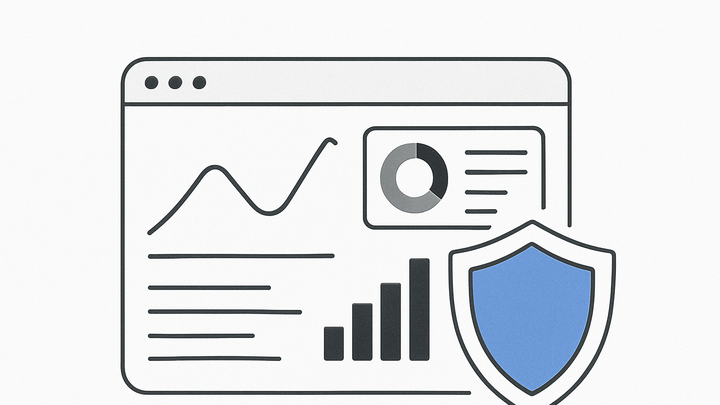Published on 2025-06-26T05:02:32Z
What is Privacy-Focused Analytics? Examples for the Analytics Industry
Privacy-Focused Analytics is an approach in the analytics industry that prioritizes user privacy by limiting the granularity of data collection and avoiding invasive tracking techniques. Privacy-focused analytics refers to measurement strategies designed to protect individual user identities by collecting only aggregated, anonymized data without relying on persistent identifiers like cookies or device fingerprints. This approach reduces privacy risks and helps businesses comply with regulations such as GDPR and CCPA. Unlike traditional analytics platforms, which often use detailed user-level tracking, privacy-focused solutions emphasize data minimization and server-side collection. Businesses can still gain meaningful insights into user behavior and website performance while respecting user consent and high privacy standards. Popular SaaS tools in this space include PlainSignal, which offers cookie-free tracking, and Google Analytics 4, which has enhanced privacy controls compared to its predecessor. By adopting privacy-focused analytics, organizations build greater trust with their users and future-proof their data practices against evolving privacy laws.
Privacy-focused analytics
An analytics method that gathers aggregated, anonymized data without cookies to protect user privacy and ensure compliance.
Introduction to Privacy-Focused Analytics
This section provides a clear definition and explains the core objectives of privacy-focused analytics within the analytics industry.
-
Definition
Privacy-focused analytics refers to strategies that collect minimal, aggregated, and anonymized data to analyze user behavior without tracking individual identities.
-
Objectives
The main goals are to safeguard user privacy, comply with legal requirements, and maintain actionable insights for business decisions.
Core Principles and Features
Explore the fundamental principles and features that distinguish privacy-focused analytics solutions from traditional analytics platforms.
-
Cookie-free tracking
This feature avoids the use of browser cookies or device fingerprints. Instead, it relies on aggregated event data collected via scripts or server-side APIs.
-
No third-party cookies
Tracking doesn’t depend on third-party cookies, reducing risks of cross-site tracking and cookie consent requirements.
-
Server-side data collection
Data is sent directly from the server or via a secure API, minimizing client-side exposure.
-
-
Data minimization
Only essential metrics are captured, such as pageviews, clicks, or conversion events, without storing user identifiers.
-
Anonymization and aggregation
Individual data points are grouped and anonymized to prevent reconstruction of personal user paths.
Benefits and Challenges
Analyze the advantages and potential limitations of adopting privacy-focused analytics in your organization.
-
Enhanced privacy compliance
By design, these solutions help meet GDPR, CCPA, and other privacy regulations, reducing legal risks.
-
Maintained user trust
Communicating a commitment to privacy can strengthen user relationships and brand reputation.
-
Reduced data granularity
Anonymization and aggregation mean less detailed user-level insights, which may limit advanced segmentation and personalization.
Comparing with Traditional Analytics
Contrast privacy-focused analytics with traditional analytics approaches, highlighting key differences in methodology and outcomes.
-
Data collection methods
Traditional analytics use cookies, local storage, or device fingerprints for user tracking, while privacy-focused analytics rely on minimal, aggregated event data.
-
Accuracy versus privacy
Privacy-focused tools may sacrifice some precision in user-level tracking for stronger privacy guarantees compared to traditional platforms.
-
Use cases
Privacy-focused analytics is ideal for public websites, content publishers, and industries with strict privacy requirements, whereas traditional analytics suits detail-oriented marketing campaigns.
Implementation Examples
Learn how to set up privacy-focused analytics using popular SaaS products like PlainSignal and Google Analytics 4.
-
Using PlainSignal
PlainSignal offers cookie-free web analytics with a simple script. Example:
<link rel="preconnect" href="//eu.plainsignal.com/" crossorigin /> <script defer data-do="yourwebsitedomain.com" data-id="0GQV1xmtzQQ" data-api="//eu.plainsignal.com" src="//cdn.plainsignal.com/plainsignal-min.js"></script> -
Using google analytics 4
GA4 includes privacy-centric features like cookieless tracking, IP anonymization, and granular data retention controls. Configure settings in the Admin panel under Data Settings.
